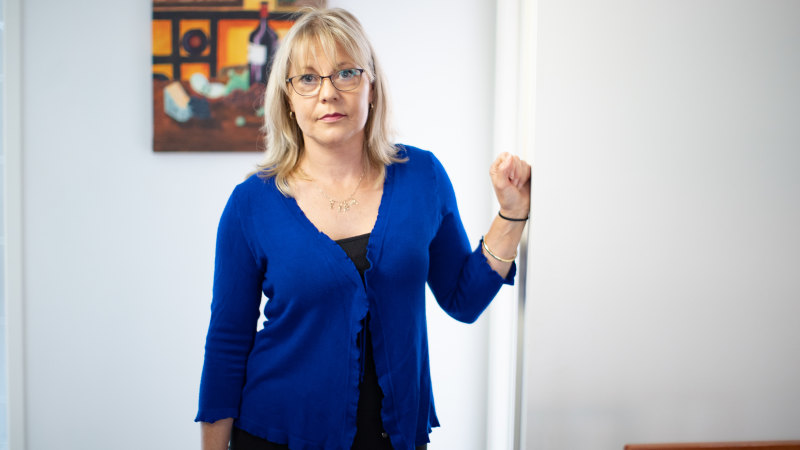Save articles for later
Add articles to your saved list and come back to them any time.
The government’s largest family assistance scheme which was originally designed to help low and middle-income families now only reaches fewer than half of Australian children.
A report from the University of Melbourne and Brotherhood of St Laurence, released on Sunday, found frequent pauses in the indexation of Family Tax Benefit A and B and their associated income thresholds have rendered the payments unfit for purpose, assisting fewer families and providing less support.
Lily Fetter received the benefits for her children. Credit: Simon Schluter
Introduced by the Howard government in 2000, family tax benefits were designed to support families and provide partial compensation for the introduction of GST.
In 2000-01, some 66 per cent of Australian children benefited from Family Tax Benefit A, compared to 46 per cent of children in 2021-22, the new analysis showed.
The two payments are the biggest single government program of family assistance expenditure in Australia, with $15.7 billion paid in 2021-22.
Family Tax Benefit A is paid per child under the age of 15, or aged 16 to 19 who are full-time high school students. Families must meet a complicated test, where income is assessed against the number and age of the children. The payment received is also influenced by the family’s income and the child’s age.
In contrast, Family Tax Benefit B is paid based on the age of a family’s youngest child. It is designed to assist families with one dominant income, or single parent or carer families.
Dr Emily Porter, a senior research fellow at the Brotherhood of St Laurence and co-author of the Growing Pains report, said the value of Family Tax Benefits had declined since 2009, when the payments shifted from being indexed to the pension rate to being indexed solely to CPI.
The indexation of the payment was then paused between 2016 and 2019, while indexation of the Family Tax Benefit Supplement, since 2016 only received by families earning less than $80,000, was paused between 2010 and 2017.
“This was originally considered a payment for low and middle-income families,” Porter said.
“But with pauses in indexation, it is now a payment targeted to low-income families, and that does mean middle-income families miss out.”
Porter said the system was no longer in the original spirit of family payments, first introduced in the mid-20th century to provide universal support for the costs of raising children, and to encourage families to do so.
The complexity of the system has also created problems. One in five recipients of the benefits incurred a debt that had to be repaid in the 2020–21 financial year, with factors such as casual work and child support payments making estimating income difficult.
“We are pushing this onto people who are already quite stressed,” said Porter, who also expressed concern about Family Tax Benefit B discouraging partnered women from working, as it would impact their benefit.
“When this system of support was created, it was designed to improve choice: giving women a choice of working outside or inside the home. But today, really, this is a system that is penalising women,” she said.
Lily Fetter, a healthcare worker and single mother from Melbourne’s outer south-east, said she now chose to receive the benefit as a lump sum at the end of the year after previously experiencing overpayment. However, she acknowledged this was not possible for families living in poverty who cannot make their weekly budget without the payment.
“It is so complicated,” said Fetter, who has two teenagers and two adult children. “For some it becomes difficult to estimate your income because it depends on child support payments. But as a casual worker, I am not always sure when I’ll be working.”
The 51-year-old said she had seen the value of family payments decline over the two decades she had received them.
The Australian Council of Social Service, the peak body for the community services sector, believes Family Tax Benefits, as well as JobSeeker, Parenting Payments and Youth Allowance should all be tied to the pension.
“We foresaw this would be the result when the indexation change was made, and we have called for reform with every budget submission we have made since,” said Jacqueline Phillips, the council’s co-deputy CEO.
“We need to move away from this idea of deserving and undeserving people.”
The council has proposed converting Family Tax Benefit B into a payment solely for single parents.
While Phillips said the discussion about whether parenting payments should be more universal was an important one to have, she said the priority needed to be providing families on the lowest incomes with adequate support for raising children.
Federal Social Services Minister Amanda Rishworth was contacted for comment.
The Morning Edition newsletter is our guide to the day’s most important and interesting stories, analysis and insights. Sign up here.
Most Viewed in National
From our partners
Source: Read Full Article



